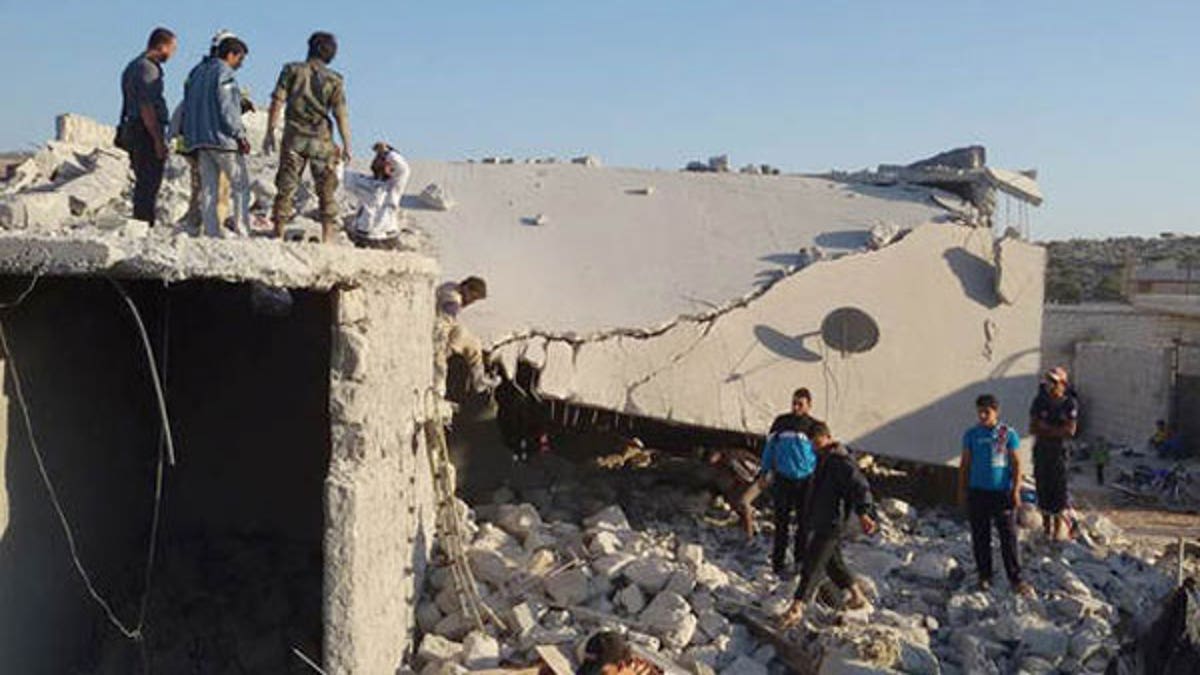
(Military.com)
U.S. military officials expected the Islamic State to rebound from wide-ranging airstrikes in Syria Monday by dispersing its forces and continuing to press attacks in Iraq, the Pentagon's operations chief said Tuesday.
"They will adapt to what we've done and seek to address shortfalls and gaps in our air campaign," said Army Lt. Gen. William C. Mayville, Jr., during a Pentagon briefing on Tuesday.
"We have seen evidence that they have already done that," Mayville said, but the U.S. will not seek to counter by using ground forces. "We have not put, and we will not put, ground forces into Syria."
However, Mayville acknowledged that deploying Joint Terminal Attack Controllers (JTACs) into Syria and Iraq to call in airstrikes would provide better targeting and prevent civilian casualties.
The attacks in Syria that began Monday night and continued into Tuesday morning also targeted the Khorosan Group, a group of al-Qaida affiliated terrorists. The U.S. targeted the group's headquarters, command and control facilities, and training areas around Aleppo in western Syria, Mayville said.
Khorasan was believed to have been "in the final stages of planning" for attacks against Western targets and possibly the U.S homeland, Mayville said. "We've been watching this group for some time," he said.
The Khorasan Group, named for the Khorasan region that once comprised parts of Afgahnistan, Iran and Uzbekistan , is believed to be headed by Muhsin al-Fadhli, a close associate of the late al-Qaida leader Osama Bin Laden. Last week, Director of National Intelligence James Clapper said that "Khorasan may pose as much of a danger" as the Islamic State.
Before leaving the White House for the United Nations, President Obama praised the support and participation of five Arab states who took part in the airstrikes into Syria – Saudia Arabia, Jordan, the United Arab Emirates, Qatar and Bahrain.
"America is proud to stand shoulder to shoulder with these nations on behalf of our common security," Obama said. "The strength of this coalition makes clear to the world that this is not just America's fight alone."
The strikes in Syria were expected to strengthen Obama's case at UN General Assembly sessions for building a broader coalition against the terror group also known as the Islamic State of Iraq and the Levant, or ISIL. Speaking on the South Lawn of the White House, Obama said he would seek support to "cut off ISIL's financing, to counter its hateful ideology, and to stop the flow of fighters into the region."
At the Pentagon briefing, Rear Adm. John Kirby, the Pentagon press secretary, said "last night's strikes were only the beginning" in a campaign to degrade and then destroy ISIL.
The London-based Syrian Observatory for Human Rights, which monitors the war in Syria, said at least 70 Islamic State fighters were killed in strikes that hit at least 50 targets in the provinces of Raqqa, Deir al-Zor and Hasakah, Reuters reported.
Kirby stressed that "we did not coordinate" with the regime of Syrian President Bashar al-Assad in the airstrikes in Syria, but he said that U.S. diplomats warned Syrian officials in New York that an attack was possible. White House officials said that Samantha Power, the U.S. Ambassador to the UN, made the contact with Syria's UN ambassador.
The U.S. has been seeking to devise a strategy that would defeat ISIL without having the side effect of shoring up Assad's regime.
"I wouldn't characterize the effects last night as benefitting Assad,' Mayville said of the airstrikes. He said Syrian air defenses tracked the U.S. aircraft and coalition aircraft but the radars were in a "passive" mode.
"We are unaware of any civilian casualties" in the airstrikes, but bomb damage assessments were continuing, Mayville said. The use of JTACs, or ground troops for close air support, was the preferred method of targeting in urban settings, Mayville said. However, the U.S. has thus far been successful in developing methods to select targets from the air.
Mayville said that U.S. warplanes recently hit ISIL targets in built-up areas around the Haditha dam in Iraq without receiving any immediate reports of civilian casualties.
The attacks in Syria came in three waves, beginning at 8:30 p.m. EST Monday with the launch of the Tomahawks at targets around Aleppo and continuing with the use of a mix of fighters, bombers, and drones, Mayville said.
The second wave at 9 p.m. hit ISIL headquarters buildings, supply bases, training areas, command and control facilities and armored vehicles around the ISIL stronghold of Raqaa in eastern Syria. Mayville said that Air Force F-22 Raptors joined the second wave in the first use of the fifth generation fighter in combat.
Mayville showed before and after photos of a command and communications building in Raqaa hit by the F-22s in what was their first combat mission. The fighter generation fighter entered service in 2005.
In the third wave, Navy and Marine pilots flying F-18s off the carrier George H.W. Bush in the Persian Gulf joined with F-16s flying from an unnamed base in the region to hit ISIL targets on the Syria-Iraq border, Mayville said. A total of 14 airstrikes were conducted in the second and third waves, the U.S. Central Command said.
The Arab states who joined in the airstrikes participated in the second wave, Mayville said. He said their warplanes were involved in bombing and combat air patrols over the targets. Jordan, Saudi Arabia, Bahrain and the United Arab Emirates were believed to have provided fighters to join in the airstrikes while Qatar allowed the use of its airfields.
The airstrikes in Syria were the heaviest in the region since Obama approved an air campaign against ISIL last month, but Mayville stressed that that the U.S. was still pursuing an "Iraq first" strategy.
"The most important thing is to create some space" for the Iraqi National Security Forces and the Kurdish peshmerga forces to regroup and "get on the offensive" against ISIL, Mayville said.
-- Richard Sisk can be reached at richard.sisk@monster.com

